More on the S&P bear market and the central bank liquidity train
Just a few moments ago I posted on the fact that the US is officially in bear market territory. On Twitter, I said that “in Fall 2008, 10-year yields went to extreme lows and then the liquidity train went into overdrive. Stocks rallied, bonds fell.” I wonder if we will have a repeat now. Felix Zulauf believes so:
Once the S&P 500 falls to 1000 or below in the first half of 2012, the Fed will come in and try to support the system. Eventually the ECB [European Central Bank] will try to do the same thing in Europe. The damage in Europe will be greater, as Europe’s financial system is even weaker than the U.S.
–Zulauf: "I expect the market to go below the latest lows in September"
We should focus on the ECB this time since the crisis has now moved to Europe. My question on Twitter was “If we get on the liquidity train, what assets will central banks buy?” More specifically, what would the ECB buy? Marshall and Warren Mosler suggest that they provide a full backstop to Greece as a quid pro quo for austerity. This is not a politically feasible plan as they point out; it would work neither for those at the ECB against monetising debts nor for Greece where the economy is being crushed by the contraction that is synonymous with fiscal consolidation.
The reality, however, is that the ECB’s equity capital is €10 billion. If Greece defaults, the ECB will lose a multiple of that amount and then you run into the bankruptcy/seigniorage problem that Willem Buiter explained in a piece I highlighted over the summer:
As long as central banks don’t have significant foreign exchange-denominated liabilities or index-linked liabilities, it will always be possible for the central bank to ensure its solvency though monetary issuance (seigniorage).
However, the scale of the recourse to seigniorage required to safeguard central bank solvency may undermine price stability. In addition, there are limits to the amount of real resources the central bank can appropriate by increasing the issuance of nominal base money. For both these reasons, it may be desirable for the Treasury to recapitalise the central bank should the central bank suffer a major capital loss as a result of its lender of last resort and market maker of last resort activities.
That’s the real problem for the ECB with default, by the way; they have been buying up the dodgy assets of the euro zone, much as the Fed did in the US in 2008 and 2009. If we get defaults then you have to take credit writedowns and that makes the ECB technically insolvent.
Without full monetisation and an explicit backstop or defaults, the European Bank Run now claiming Franco-Belgian bank Dexia will continue – and get worse. Frankly, there aren’t any palatable solutions. The Europeans need to pick one, full monetisation or default and recap, and see it through. Of course, buying up Greek assets and promising to backstop Greece, preventing default at these levels, gives the ECB a serious filup from the resulting asset price appreciation. The ECB could then always let Greece default down the line without taking a hit to their capital.
As to the bear market, Andy Lees of UBS has a few thoughts this morning:
A few quick charts. The first is a long term – (post 1974) chart of the S&P. Post Lehman’s we traded aggressively below the trend that had remained in place bar the temporary dip when Mexico declared a moratorium on its debt in 1982. It has since traded back up towards the trend and is now clearly rolling over again. The chart looks extremely vulnerable in my opinion. The second chart shows a similar picture of the Nasdaq.
The third chart shows a much shorter dated S&P. As you can see we are at the Lehman’s convulsion point from which the S&P quickly fell 200 points before finding any support. Chart 4 shows this level was also extremely important in the Russian debt default and LTCM, falling 150 points from here before trading back to this level and repeating the whole thing again all within the matter of a couple of months. It is also the level which the market initially bottomed after the internet / telecoms bubble blew up, falling 250 points in its final throws to this level and then bouncing back again, all between February and May 2001. It is the level from which the market plunged after 9/11 and then acted as the bottom of the range from November 2001 to June 2002 when we had the accounting scandals of Enron etc, and it is from here the market plunged in June 2002 as the European insurance crisis unfolded and the market started to prepare for the Iraq war.
The 5th and final chart shows that just 7% of shares listed on the NYSE are still above their 200 day moving average. On the face of it this could offer some support as the previous lows did coincide roughly with the first low in 1998, a low in 2002 and obviously the 2009 low, however what the chart also highlights is that this index was at these levels or lower from October 2008 to March 2009 during which the S&P fell 30%.
The Fed, the ECB or the PBOC could bail us out, but to me these charts are suggesting that we are likely to see a further sharp deterioration in the short term.
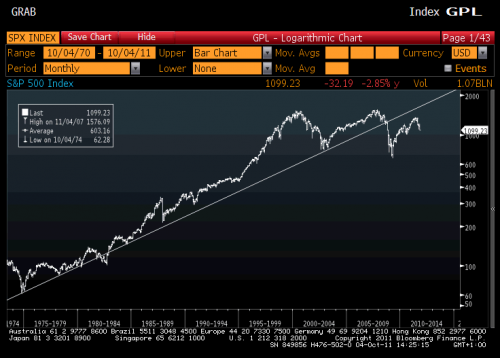
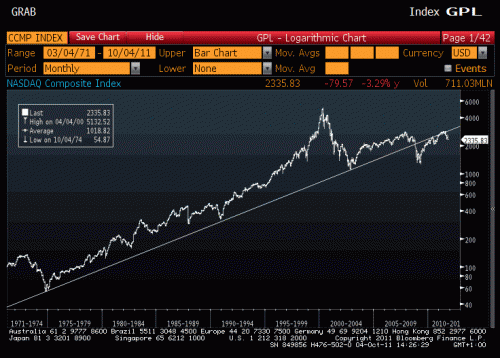
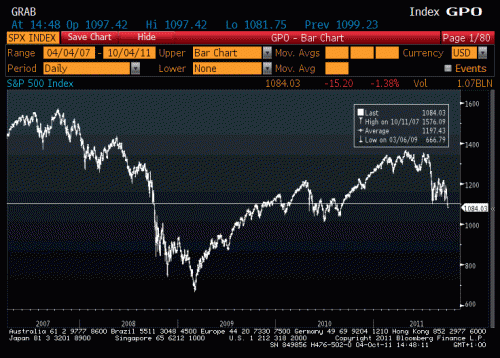
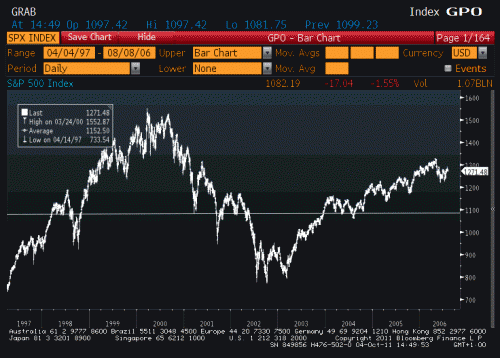
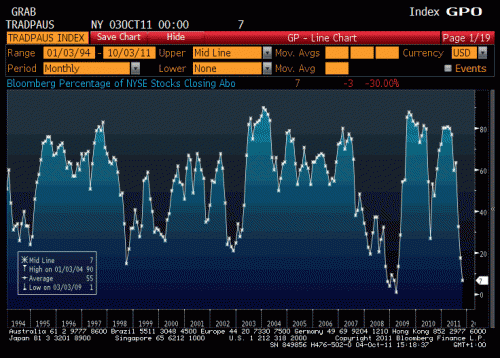
Comments are closed.